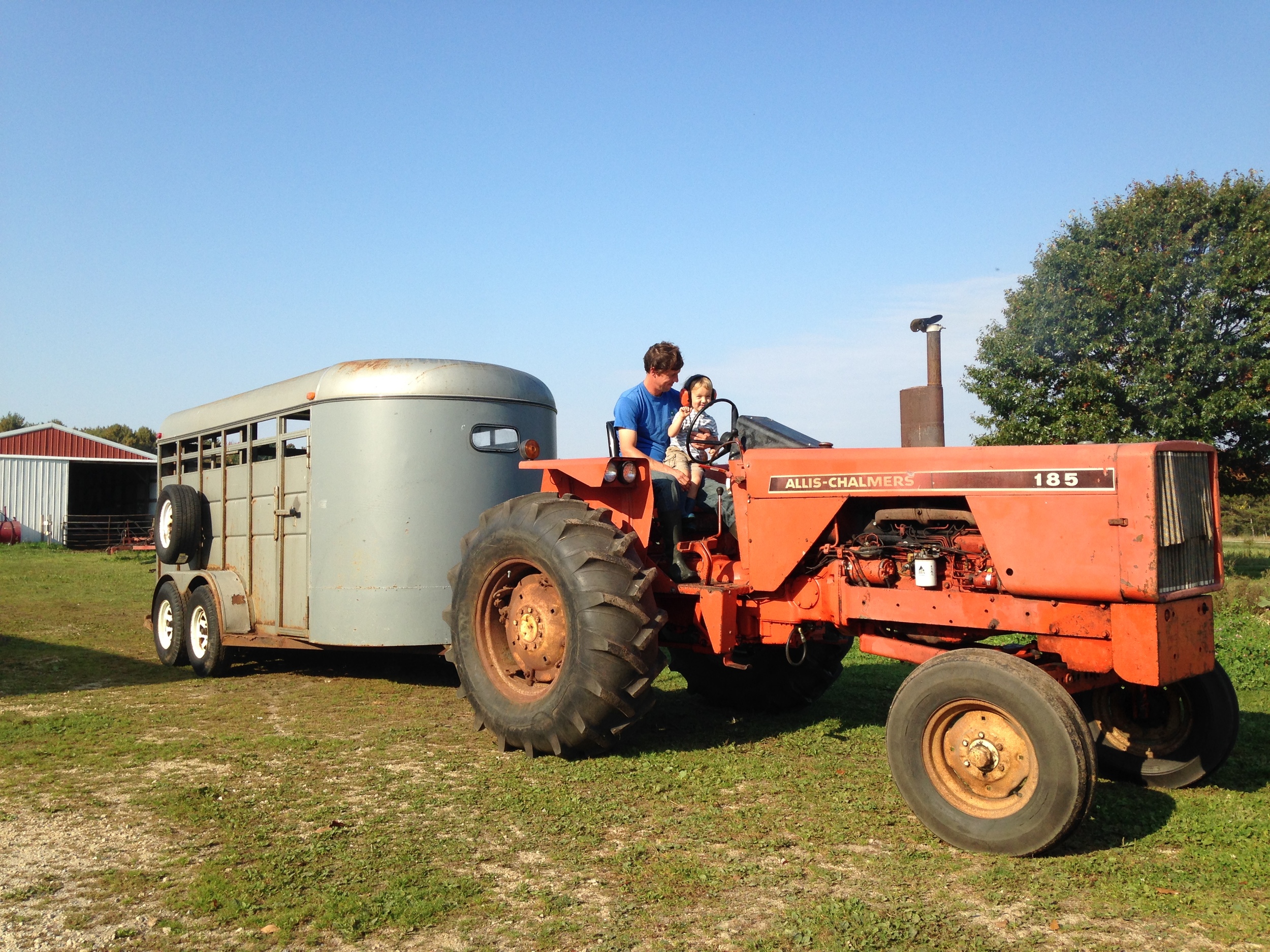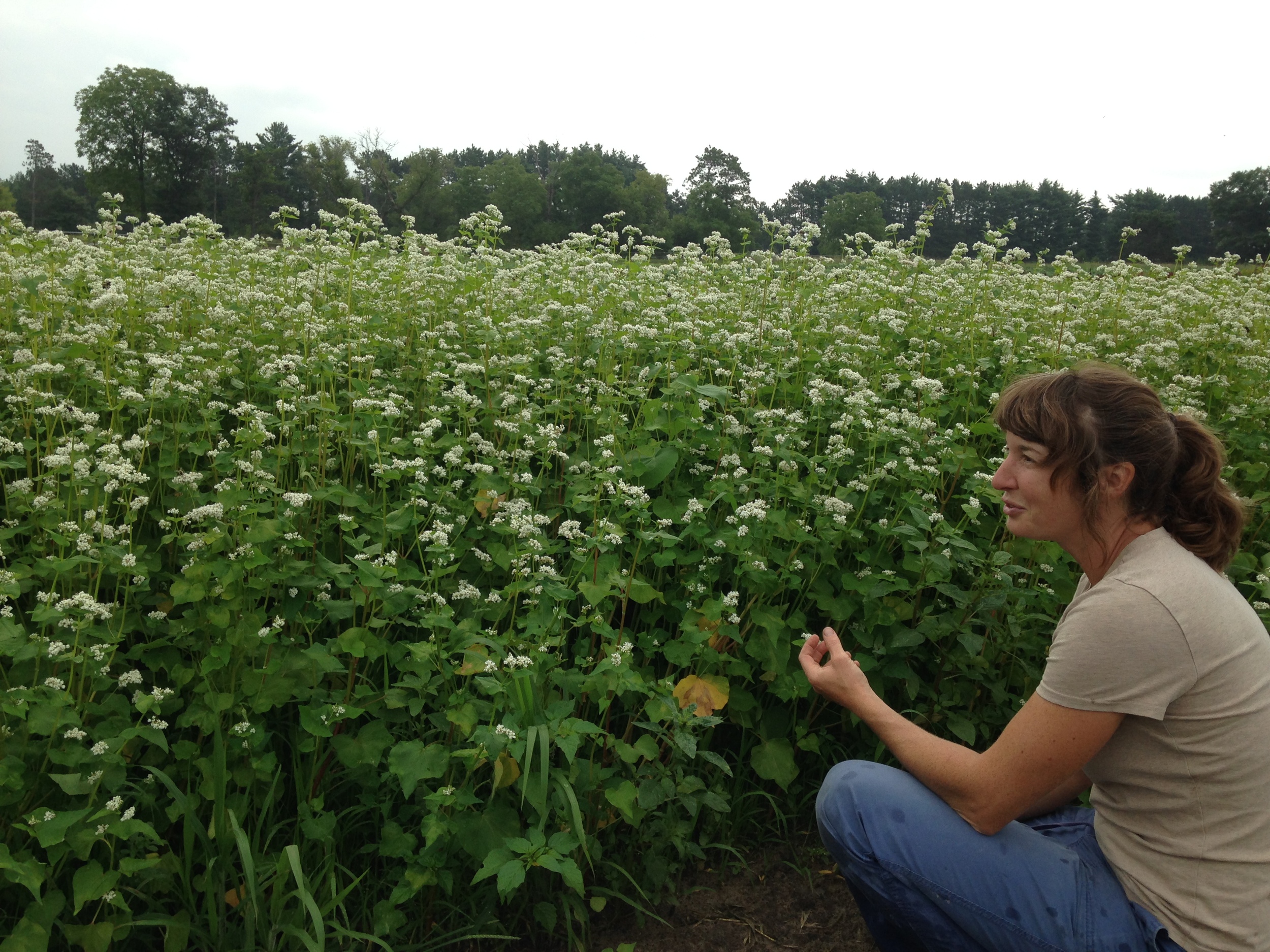Last week brought one of my favorite tasks on the farm - the garlic harvest! Though garlic is only one of many crops that grows underground, for some reason it always seems so magical to me when you pull them out and see the nice big heads. I think this must have something to do with the fact that they’ve been in the ground since last October - they were planted a whole NINE months ago. They were in the ground when the windchill reached 26 below in January, and they still managed to poke their little green shoots through the straw mulch this spring. Anyways, last fall I amassed a small amount of sixteen more varieties of garlic apart from the four the Boersons grow. I started a spreadsheet to keep everything straight, and then I planted a whole 200-foot row in addition to the other six that made up the main garlic crop. So the afternoon before a whole crew was due to assemble to harvest the garlic, I grabbed a notebook, baling twine, tape, and a marker and set about pulling up my test plot. Making my way through the varieties, I counted how many germinated, how many were seed-worthy specimens, estimated the average number of cloves per head, etc. When they’ve hung in the corn crib long enough to have dried out, I’ll cut them down, weigh them, label them, and taste them. I’ve already decided that one variety didn’t perform well enough to grow again next year, and I’m on the fence about another. In October, I’ll take out my bagged and labeled seed garlic, pop all the cloves off the stem, then plant, mulch, and label my beds. A year from now, I’ll start the process again, and no doubt I’ll still find myself amazed to pull a fully formed head of garlic where last fall I left just a small clove.
My seed garlic is not the only “seed” I’ve begun to stockpile in anticipation of my move to Hazel Hill Farm this fall. This other seed stock, however, is of the four-legged variety. Besides my vegetables, another component of next year’s farm landscape will be three sows and a boar. One of these sows is already a full-grown, proven mother who’ll be coming with me from the Boersons’ as part of my salary. She’s a Large Black Hog (LBH), a rare heritage breed that originated in England and is recognizable by its long body and big floppy ears. My second sow is still a gilt - the name for a female pig that has yet to farrow, or have a litter of pigs. She’s a Mulefoot hog, an even rarer breed, this one notable for its distinctive uncleft hooves. My third sow is TBD, but will be a Tamworth, because my boar is a Tamworth. When you say boar, a huge, fearsome pig with big tusks comes to mind, but mine is a newly-weaned pig pushing 50 lbs. He’s the stoutest fellow from a healthy litter of twelve, and has been named Two-Spot by young Shep, an imaginative but very literal namer, because of the two black spots on his rear end. With three different breeds of sow, this means that by replacing the boar every year or two, I’ll always have two different crosses and one purebred pair. So-called “hybrid vigor” means that the crossed pigs will be a bit stouter and grow a little faster than their pure counterparts, and having a pure line will mean I can grow my own replacement stock. Rotating boars between breeds means that I can constantly be improving my stock, a process aided by the fact that a pig has a relatively short gestation period (under 4 months) and can be safely bred at a relatively young age (around 8 or 9 months).
My plan with the pigs is to sell both feeder pigs and a few whole and half hogs in the first few years as I rotate them through the overgrown pasture and scrubby forest. As I improve my infrastructure, my plan is to breed selectively for traits I want, improving my herd as I start to grow out more and more pigs to full size, offering pork shares perhaps as early as the second year. In the long term, my goal is permaculture prosciutto and other dry-cured meats, in which the pigs I have bred specific to my farm with eat only food grown on the farm, and will be cured on-farm, resulting in a hyper-local artisanal product with potential for shipping and sales to high-end meat and cheese counters across the midwest (Zingerman’s, we will meet again!). This is many years in the future, however, and in the meantime, my breeding stock is growing in leaps and bounds.
On the farm, too, things are shaping up. I’ve been making the 2-hour commute pretty often this summer, and the late summer and early fall will see more and more frequent visits as I continue to break sod, get my barns ready for animals, and try to complete as many building projects as possible before the ground freezes for good. Things are coming along nicely, and I’ve even gotten the paperwork ball rolling on things like organic certification and a low-interest microloan from the FSA (Farm Service Agency). These things too feel almost like seed stock for the new farm - a little piece of paper now that will enable big things later. Besides the Boersons and my own family, there have also been a few notable contributions to my “seed stock” that have bolstered both my confidence that I’m trying to do something worthwhile and that there are amazing people out there who believe I am onto something. A few weeks ago, an incredible family I know in the area called and asked if I would consider house-sitting during their vacation in exchange for a young Jersey heifer calf. Having already decided to keep her older sister, they couldn’t see into keeping a third cow, and was hoping she might be useful in my growing menagerie. It was a great call to get, and I would have fed their animals and watered their garden for much less!
In a similar vein, a longtime family friend emailed a few months ago with another extraordinary gesture. She had been following my farming journey through the blog and had decided that she would like to contribute what was left of a memorial fund for her son to the farm. He would have really appreciated what I’m trying to do, she told me, and she thought it would be a fitting use of the funds. I was blown away by the gesture, and knew I had to come up with a fitting way to use the money so that it didn’t just disappear into the stream of cash it takes to start up a business. I decided to deem it the “Perennial Fund,” and use it to establish the perennial crops on the farm that would have taken a backseat to other faster-bearing investments. This way, an important facet of the farm would get a jump-start, and there would be a lasting and tangible way to honor this amazing young man on the farm. The rhubarb, asparagus, berries, and nut and fruit trees will yield for years to come, and might otherwise have been postponed or done halfway. If you’d like to contribute a few dollars to the Perennial Fund for Hazel Hill Farm, you can click the button below.
Seed garlic, breeding stock, seed money. The imagery and symbolism of seeds has always captivated me - the sheer potential encapsulated in such a tiny package, the resilience, the stored energy, the connection with the past and the future, the portability and prerogative to exchange information. In these dog days of summer, when the sun bears down hard and the plants are bearing heavily, the emergence of the garlic makes me feel supported by the earth itself and gestures like these make me feel supported by the community of people I have around me, near and far. I am working harder than I have ever worked before, and will only work harder still as Hazel Hill springs into being, but I go to sleep happy and exhausted and wake up energized and ready to do it all over again. Gathering my seeds, saving them, sowing them, giving thanks.









































